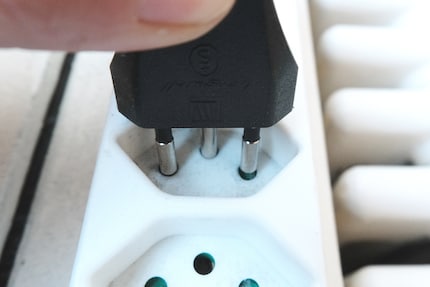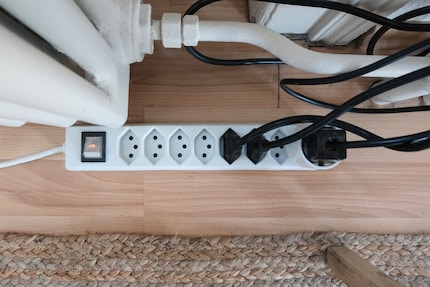
Background information
Quagga mussel problem: How to clean your SUP when changing waters
by Siri Schubert

Power strips make using multiple devices easier. However, the often installed contact protection is anything but simplistic. Is this really the best we can do?
«Sometimes it really just helps to carefully break the fuses (jam a point or slotted screwdriver in there and gently hammer on).»
or
«It’s probably the most blunt answer in this whole thread, but I just realised: brute force works! :)»
and
«Almost breaking your fingers every time you plug it in because it’s so tight can’t be what the inventor had in mind. In the meantime, I resorted to a radical solution and drilled through the annoying plates.»
You’ll hear many solutions on Internet forums, all surrounding power strips that are stuck due to contact protection. This isn’t what the inventor would’ve wanted. The mechanism was designed primarily to protect children from electrocution when curiously tinkering with the strips and screws. After all, the plastic plates can only be pushed to the side by applying equal pressure to both holes.

So the extra protection makes perfect sense. But the fact that plugs can often only be plugged in and unplugged with great difficulty is frustrating and by far not just a problem of individual forum fans. Colleague Kevin Hofer even disassembled a power strip in a frenzy. The company Brennenstuhl, which manufactures power strips among other things, has even dedicated a separate section on its website to this topic. So the problem is well known. Is there no better mechanism?
According to Lectra Technik AG, Brennenstuhl’s sister company, contact protection per se isn’t the main problem. From a design point of view, it isn’t badly implemented and fulfils its purpose. However, it also has its disadvantages, such as difficult handling. The user frustration that often results from this, manifesting itself in violent connector plugging, is detrimental to contact protection. But the plugs themselves also cause trouble for the mechanism.
SN 441011 is the Swiss socket and plug standard. This includes the three-pole T12 plug and T13 socket – together also known as type J – and the two-pole T11 plug, which fits perfectly into three-pole sockets.
But then there’s also the two-pin Euro plug, which is used all over Europe. SN 441011 also specifies that this type of plug must fit all Swiss sockets. It does, but not perfectly. The pins are slightly thinner than those of the T11 plug, and are bent inwards to make sufficient contact in all European socket types. This makes handling more difficult. The plug gets caught more easily, the mechanism is damaged, the protection jams, and users are frustrated. This in turn often leads to the use of force, which further damages the contact protection.

Meanwhile, since a touch guard isn’t mandatory, many products omit it. This allows customers to decide for themselves whether increased safety or simplified handling is the priority. Power strips without plastic sliders are also safe, apparently. Touch protection additionally increases safety – especially for small children and pets.
According to Lectra, this change in thinking began about 15 years ago in the construction industry. Workers apparently complained as the slats would become very dirty, causing the protective mechanism to jam. Since «child safety» really wasn’t necessary in declared industrial power strips and alternatives were expressly requested, Brennenstuhl dispensed with protective covers in its products for construction from then on.
Shortly thereafter, complaints from private customers regarding use of the touch guard also increased. It’s probably no coincidence that Europlug simultaneously became more and more widespread.
And what do countries such as Spain or France do, where touch protection is mandatory? In Spain, for example, the Schuko system is predominant, yet Euro plugs must also fit. Schuko plugs have an advantage. They’re larger, which simplifies mechanical implementation.
Whether users are satisfied with the solution cannot be said conclusively. At least in Germany, where the same conditions prevail, countless comments from frustrated buyers can be found. For all in this country who cannot cope with covers: from now on, buy power strips without them – we even have a filter for this – and give away the old ones to friends or anyone else.
But please don’t try to remove the plastic with a drill.
My life in a nutshell? On a quest to broaden my horizon. I love discovering and learning new skills and I see a chance to experience something new in everything – be it travelling, reading, cooking, movies or DIY.
Interesting facts about products, behind-the-scenes looks at manufacturers and deep-dives on interesting people.
Show all